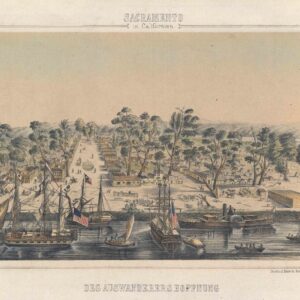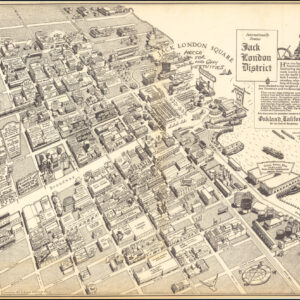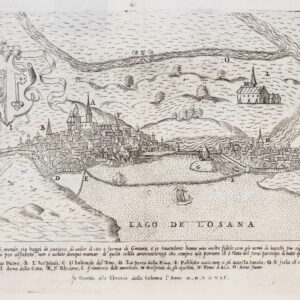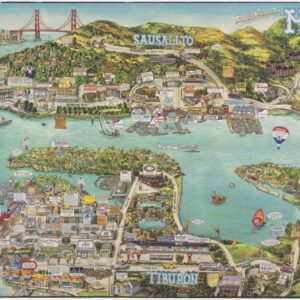The most enticingly realistic depiction of Niagara Falls from the 19th century.
Les Chutes du Niagara, Vue Generale; Niagara Falls, General View.
$2,000
In stock
Description
This gorgeous and scarce hand-colored aquatint provides a spectacular view of Niagara Falls. It was produced in 1852 based on an oil painting made by the traveling French painter Hippolyte Victor Valentin Sébron, who visited the falls in 1850 and composed two wonderful oil paintings during his stay. Sébron soon realized how enticing his dramatic depictions were and had the views engraved for commercial reproduction by Swiss graphic artist Friedrich Salathé. With the subsequent hand-coloring of each aquatint, the printed view not only emulated the vivaciousness of Sébron’s original painting but provided one of the most realistic illustrations of Niagara Falls in the 19th century.
In this general overview, one can see both of the great Niagara cataracts: the Horseshoe or Canadian Falls on the right and the American Falls on the left. At the bottom of both great plunges, the white spray rises to a dense opaque haze. Niagara Falls was a natural wonder that, already in the mid-19th century, drew thousands of visitors each year. Some of these early tourists are seen in the foreground of Sébron’s composition, which contains empty carriages waiting for guests to return, and large row boats dragged ashore on makeshift wooden rails. At the base of the American Falls, the iconic Maid of the Mist steamboat sails its passengers tantalizingly close to the furious roar of the bowl.
Sébron’s original paintings of Niagara Falls were well-received in the elite circles of New York and New Orleans. By converting them to aquatints, he made his dramatic capture available to everyone. The attractive hand-colored prints quickly became – and remain – some of the most evocative and desirable depictions of Niagara Falls on the market.
Census
Sébron painted two canvasses when he visited Niagara Falls in 1850: this general view and a dedicated view of the Horseshoe Falls on the Canadian side. Both compositions were engraved by Salathé for printing as aquatints, and the rights to produce these were sold to the French lithography company Goupil & Co, who issued the views from their New York offices (hence the title in both French and English).
Despite its popularity at the time, Sébron’s views are increasingly difficult to find and considered scarce to the market. The OCLC only lists a single holding of the General View, which is in the collection of the American Antiquarian Society (no. 799995090). Other than ours, we note two examples currently for sale between $5750 and $7000.
Cartographer(s):
Friedrich Salathé (17931858) was a Swiss engraver and graphic artist best known for his landscapes. Born in Binningen near Basel, Salathé apprenticed with Swiss painter Peter Birmann and later served on the Pope’s Swiss Guard. He returned to Binningen in 1821 before moving to Paris in 1823, where he achieved considerable success and recognition (including exhibited works at the Paris Salon in 1841).
Hippolyte Victor Valentin SébronHippolyte Victor Valentin Sébron (1801-1879) was a French painter who traveled and worked throughout Europe, Asia, and the United States. Born in the Seine-Maritime, Sébron is best known for his landscapes and dioramas, although other he painted other scenes as well. His work was regularly exhibited in Paris salons, at the London Royal Bazaar, and at the New York National Academy of Design.
In addition to his landscapes from across the world, Sébron worked closely with the inventor of the daguerreotype to create artworks that used lighting and painting techniques to create optical effects.
Condition Description
Average. Closed tear at center professionally reinforced and repaired. The bottom margin is trimmed with some loss to the title.
References



